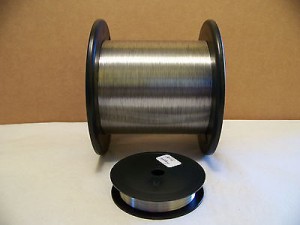 What type of wire to buy, what is better to choose Nichrome or Kanthal?
What type of wire to buy, what is better to choose Nichrome or Kanthal?
First of all, you must choose the wire type based on where you are going to use it, if in genesis tanks or any other tank where is used as a wick stainless steel mesh – then it is better to buy Kanthal. Atomizers where are used as wick: silica cord or bamboo yarn, can be used both Kanthal and Nichrome. Subjectively, with silica wire is better to use Nichrome, because it heats quickly, which is important for less powerful devices.
Differences between wire types consist in alloy structure and composition:
Nichrome – consists of nickel and chromium (nichrome) alloy, depending on grade may comprise other metals for improvement of various characteristics.
Kanthal – a registered trademark owned by Sandvik Materials Technology, under this name Sandvic company produces alloys consisting of iron, chromium and aluminum, the wires of other manufacturers consisting of the same alloy are called Fechral (FeCrAl).
Both alloys (Nichrome and Kanthal) are used as heating elements in all sorts of electrical devices – irons, hair dryers, electric furnaces for firing and drying, but Kanthal and Nichrome have several different properties. Kanthal is heated uniformly and has practically no spring effect during winding. Nichrome – a little more resistant to aggressive environments, not so quickly darkens, is softer and easier bends.
Depending on alloy composition the wire is marked with letters and numbers, nichrome may be marked as – Cr20Ni80, Cr30Ni70, Cr20Ni35, Cr20Ni30, Cr15Ni60, numbers indicate the percentage of metal in alloy, for example: Cr20Ni80 – means that this nichrome wire contains 20% of chromium and 80% nickel. Kanthal wire also can be of several types for example Kanthal A1 and Kanthal D, the difference is in temperature of heating, A1 is more heat-resistant, in the case for electronic cigarettes there is not much difference between them, but if to choose A1 or D, it is better to buy A1.
About resistance and wire diameter:
The principle is pretty simple, the thicker is the wire – the less resistance it has. For example – 5 windings of nichrome wire with a diameter of 0.10 mm – 2.2 ohms resistance, 5 windings of nichrome wire with a diameter of 0.20 mm – 1.2 ohms.
The most common diameters for nichrome – 0.20 mm, Kanthal – 0.30 mm, the wire with a diameter of 0.10 and 0.15 mm is often used for pigtail winding, to increase the efficiency and heating area.